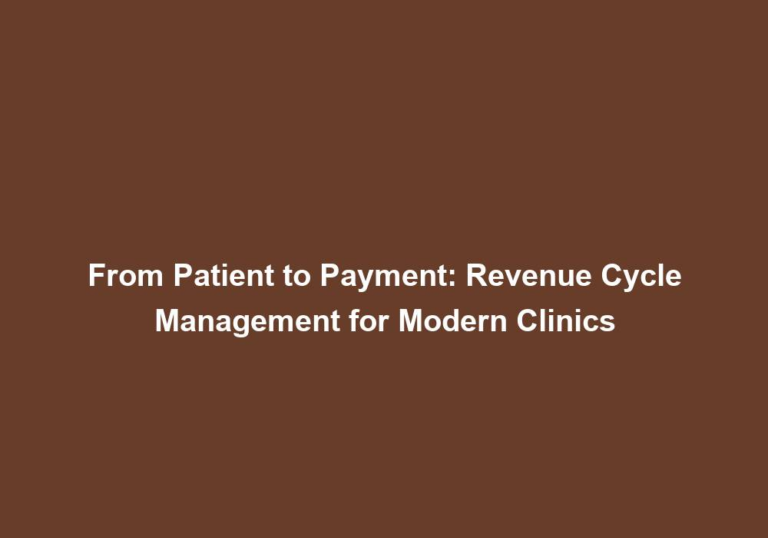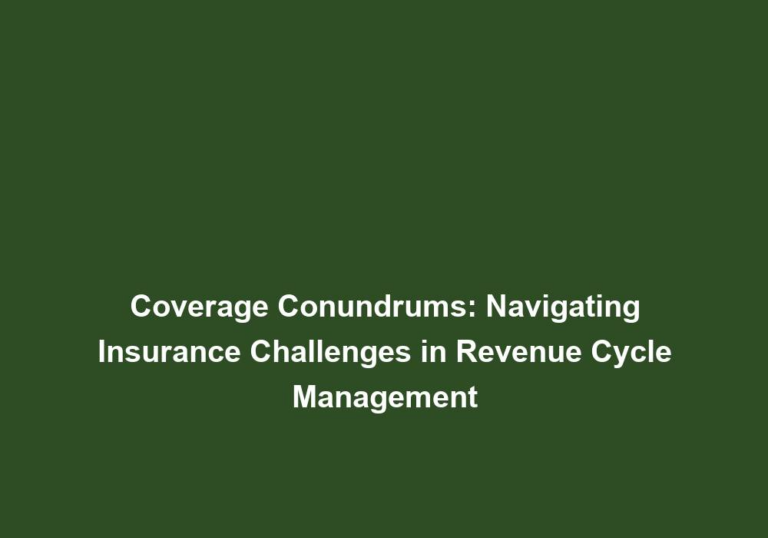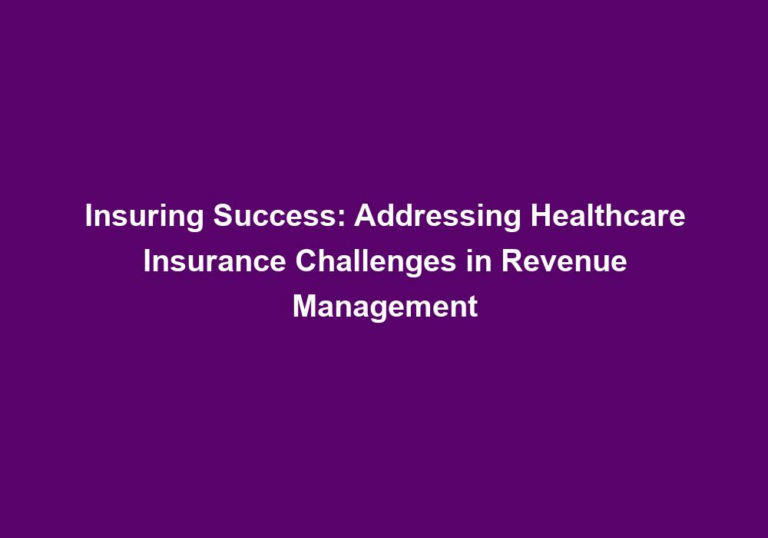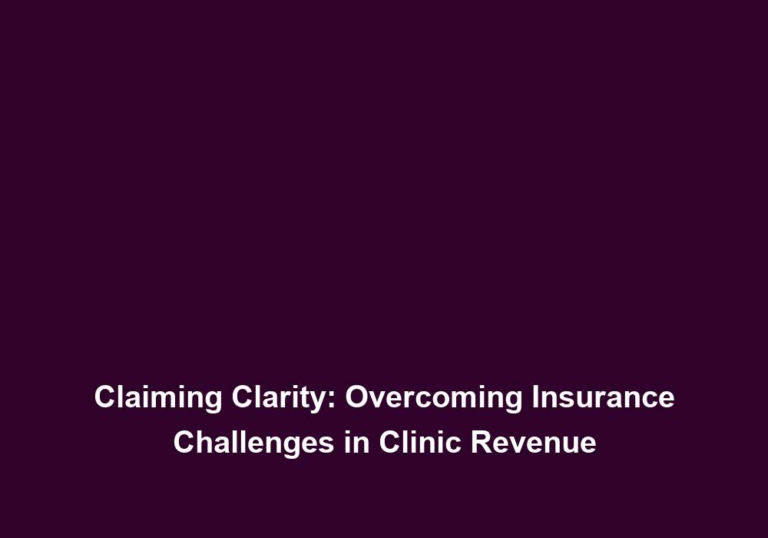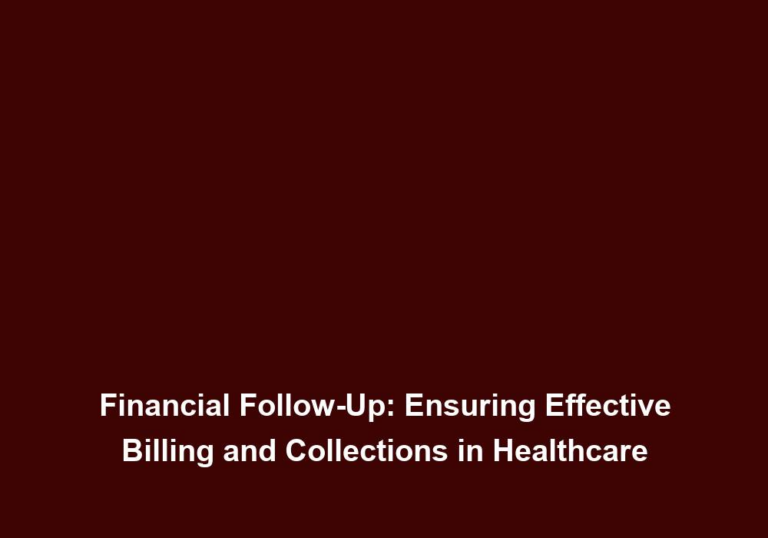Bill Brilliance: Best Practices for Medical Billing and Collections
In the ever-evolving healthcare industry, medical billing and collections play a pivotal role in ensuring the financial stability and success of medical practices. To optimize revenue cycle management, it is essential to implement best practices that enhance the effectiveness and efficiency of billing processes. This article will delve into the key strategies and recommendations for achieving excellence in medical billing and collections.
1. Understanding the Revenue Cycle
Before delving into the best practices, it is crucial to have a comprehensive understanding of the revenue cycle in medical billing. This cycle encompasses all the steps involved in the financial process, starting from patient registration to claim reimbursement. Each stage, including scheduling appointments, verifying insurance coverage, submitting claims, posting payments, and handling denials or appeals, is interconnected and crucial for a seamless revenue cycle.
To ensure a smooth revenue cycle, medical practices should adopt strategies that optimize each stage. By doing so, they can maximize revenue, reduce claim denials, and improve overall financial performance.
2. Accurate Patient Registration and Verification
One of the fundamental pillars of successful medical billing and collections is accurate patient registration and verification. Collecting complete and up-to-date demographic and insurance information at the initial stage is paramount. This includes the patient’s name, date of birth, address, contact details, and insurance policy information.
To further enhance accuracy, it is imperative to verify insurance coverage and eligibility before the patient’s visit. This proactive approach helps avoid claim denials or rejections later, saving both time and resources. Implementing automated verification processes can expedite this stage and minimize errors.
3. Clear Communication with Patients
Effective communication with patients is a critical aspect of medical billing and collections. It is essential to establish transparent and open lines of communication, ensuring that patients understand the billing process, their insurance coverage, and any out-of-pocket expenses they may incur.
By providing comprehensive and easy-to-understand explanations of medical bills, patients are more likely to pay their bills promptly. Clear communication also helps minimize confusion and prevents billing disputes, ultimately leading to faster and more successful collections.
To further enhance communication, medical practices can leverage technology to send automated reminders, payment notifications, and provide online portals for patients to access and review their billing information.
4. Streamlined Coding and Documentation
Accurate coding and documentation are vital for proper claim submission and reimbursement. To achieve this, medical practices should have well-trained medical coders who stay updated with the latest coding guidelines and regulations. This ensures that procedures, diagnoses, and services are accurately coded, reducing the likelihood of claim denials due to insufficient or incorrect information.
Physicians and providers should also prioritize documenting patient encounters with precision. Thorough and meticulous documentation ensures that all services rendered are appropriately recorded, supporting the claims submitted. By incorporating templates, standardized processes, and periodic training, medical practices can improve coding accuracy and streamline documentation practices.
5. Timely Claim Submission
Timely claim submission is crucial for maximizing revenue and minimizing payment delays or denials. Medical practices should establish efficient systems and processes to ensure that claims are submitted within the stipulated timeframes. Utilizing electronic claim submission platforms can expedite this process and significantly reduce the chances of errors.
To further optimize claim submission, medical practices can implement automated alerts and reminders, ensuring that claims are not overlooked or delayed. Routine monitoring and timely follow-ups on pending claims can also help identify and address any issues promptly, leading to improved cash flow.
6. Regular Follow-Up on Unpaid Claims
Following up on unpaid claims is a critical part of medical billing and collections. Medical practices should establish a systematic process for tracking and managing unpaid claims, ensuring that they are appropriately addressed. This includes initiating timely follow-ups with insurance companies, monitoring claim status, and taking necessary actions to resolve any pending issues.
To facilitate effective follow-up, medical practices can implement technology-driven solutions that automate claim tracking and streamline communication with insurance providers. By sending patient statements for any outstanding balances and offering convenient payment options, medical practices increase the likelihood of successful collections.
7. Effective Denial Management
Claim denials are common in medical billing, but effective denial management can significantly impact revenue. Medical practices should analyze denial patterns, identify root causes, and implement corrective actions to reduce future denials. This may involve enhancing coding accuracy, improving documentation practices, and addressing any recurring issues.
Promptly appealing denials with appropriate supporting documentation is crucial to maximizing revenue and minimizing revenue leakage. Medical practices should allocate resources to develop a robust denial management system, including designated staff responsible for tracking, appealing, and resolving denials. By monitoring denial rates and implementing proactive measures, medical practices can optimize their revenue cycle.
8. Utilizing Technology and Automation
Leveraging technology and automation can streamline and optimize medical billing and collections processes. Electronic health record (EHR) systems integrated with billing software can enhance accuracy, efficiency, and productivity. This integration enables seamless data transfer and reduces the chances of errors during claim submission.
Automation of repetitive tasks, such as claim submission, payment posting, and reporting, can save time and reduce manual errors. By implementing automated workflows and utilizing artificial intelligence-driven solutions, medical practices can improve billing efficiency, enhance revenue cycle management, and minimize administrative burdens.
9. Compliance with Regulations and Reimbursement Policies
Staying compliant with healthcare regulations and reimbursement policies is vital for medical billing success. Medical practices must stay updated with the latest changes in coding guidelines, billing rules, and regulatory requirements. Regular training and education for staff members are essential to ensure adherence to compliance standards.
By investing in ongoing training and education, medical practices empower their staff to navigate the complex landscape of healthcare regulations. This not only improves compliance but also minimizes the risk of audits, penalties, and potential revenue loss.
10. Continuous Performance Monitoring and Analysis
Regular performance monitoring and analysis are crucial for identifying areas of improvement and optimizing revenue cycle management. Key performance indicators (KPIs), such as average reimbursement time, denial rate, and collections ratio, provide valuable insights into the effectiveness of billing processes. By tracking these KPIs, medical practices can identify inefficiencies, implement necessary changes, and measure the impact of their efforts.
Periodic audits and reviews further enhance performance monitoring, allowing medical practices to identify potential revenue leakage, compliance gaps, or process bottlenecks. By proactively addressing these issues, medical practices can continuously improve their billing and collections processes, leading to enhanced financial success.
In conclusion, implementing best practices for medical billing and collections is essential for healthcare organizations to achieve financial success. Accurate patient registration, clear communication, streamlined coding, timely claim submission, effective denial management, and utilization of technology are key elements that optimize revenue cycle management. Compliance with regulations and continuous performance monitoring ensures ongoing improvement and success in medical billing and collections.


